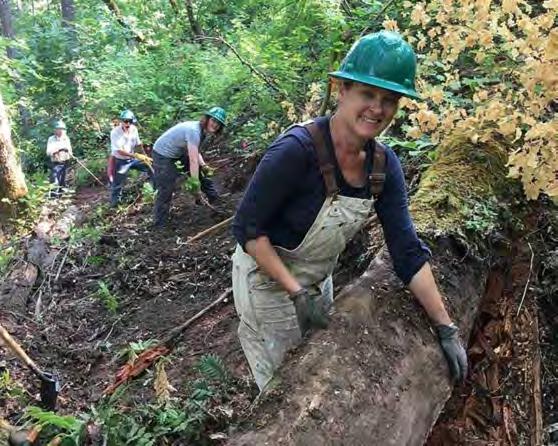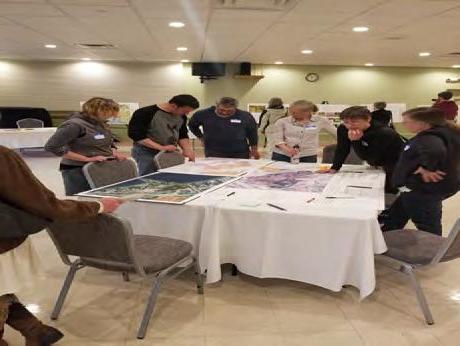Scarification • Compacted soil will inhibit vegetation from establishing itself and will need to be loosened for the area to be naturalized. The soil should be left loose to allow plants a place to sprout. • The tread surface can be loosened by hand using a pick mattock, McLeoud, fire rake or rouge hoe, or pulaski. Areas where the trail is cupped or recessed should have the edges of the trail knocked down so it will bend into the original landform. Naturalization • Naturalization will help accelerate the process of blending the closed trail back into the surrounding landscape. Seeding with local plants and organic material from the surrounding landscape will help reduce the introduction of invasives. • Leaf litter and sections of top soil from the surrounding area should be placed over the loosened soil especially in areas visible from active trails. • Material excavated from new trails or re-routes within the forest can be used to help with the renaturalization of closed trails. The top layer of organic material should be collected and redistributed along closed trail sections. • Planting or transplanting a few native trees or shrubs will also help naturalize the trail and send the message that the corridor is being decommissioned. To avoid introduction of invasive plant species: • Using top soil and leaf litter from the surrounding area will minimize the introduction of invasives. • Any imported soil, if required, should be certified to be weed free. • Hand harvest and transplant trees and shrubs from the surrounding forest. • In especially sensitive areas use only leaf litter from the surrounding area and allow for natural regrowth. • Monitor trail closures for invasive plants and eradicate as needed.
26



